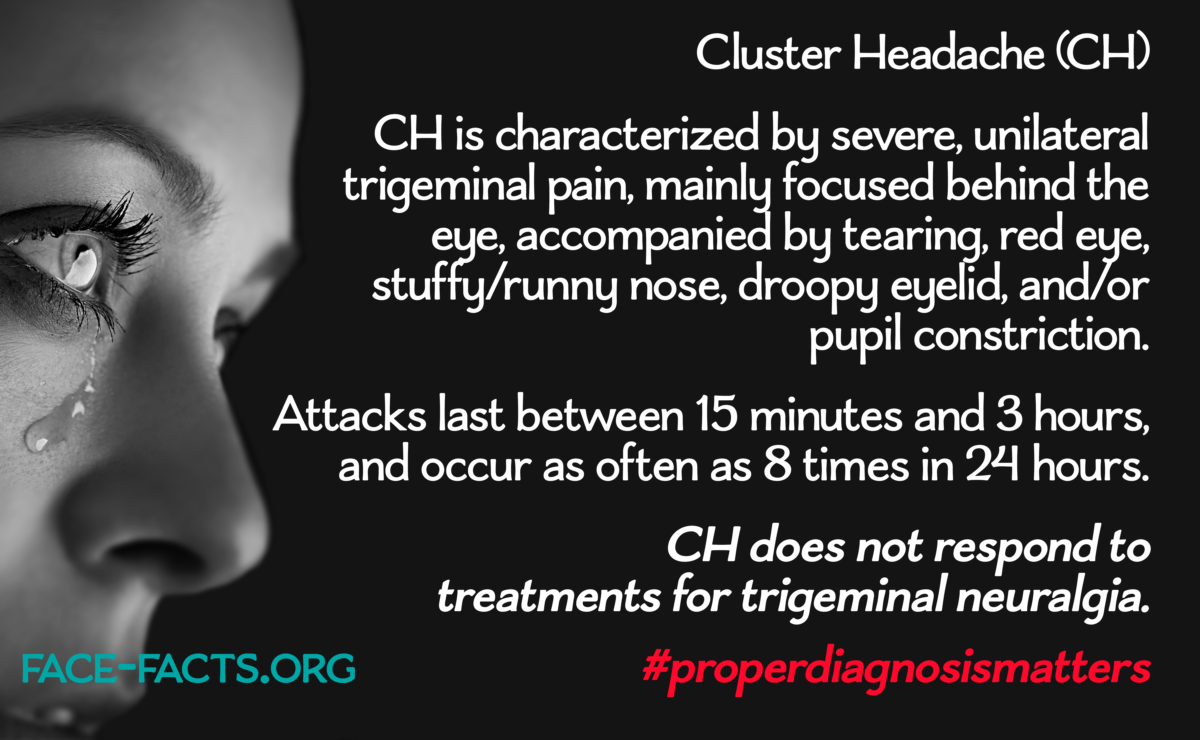There are many different chronic facial pain diagnoses besides trigeminal neuralgia, and they do not all respond to the same treatments. Accurate diagnosis of chronic facial pain is critical to effective pain management.
So, if your facial pain isn’t TN, what is it? It could be a trigeminal autonomic cephalgia (TAC) known as cluster headache.

The pain of cluster headache is unilateral in at least 97% of people with episodic disease and mainly focused behind the eye over the temple, or over the jawbone, although it may extend to other areas of the head and neck. Between 14% and 18% of patients report that the pain shifts sides between bouts of attacks and less commonly during a bout, but never during the attack itself. Patients often describe the pain as a sharp, piercing, burning, or pulsating sensation like “having a red hot poker forced through my eye,” and they report that the intensity is so extreme it is unlike anything they have ever experienced (“11 out of 10.”)
Attacks should last between 15 and 180 minutes, although on rare occasions they can last longer.
The onset of pain is rapid, and the sensation increases from serious discomfort to excruciating pain over the course of a few minutes. The pain usually stays at maximal intensity for the duration of the attack, although it may wax and wane slightly, or be punctuated by super-intense stabs of pain. The attack will often end as abruptly as it started.
The frequency of attacks varies from one attack every 48 hours to eight separate attacks in 24 hours, although less frequent attacks may occur at the beginning and end of bouts.
Most patients describe a sense of restlessness and agitation during an attack and will often pace, rock back and forth, and bang their heads. Most patients wish to isolate themselves and seek a cold environment. Between 28% and 50% report nausea, and a further 23% may vomit during an attack. More than half of patients have extreme sensitivity to light, often limited to the same side as the pain, with slightly fewer reporting an aversion to loud noise or strong smells during the attack.
Aura phenomena, similar to those experienced during migraine, including visual phenomena and abnormal sensations, precede attacks by up to 60 minutes in 14% of patients.
Patients commonly have tenderness and allodynia at and around the site of pain between attacks, including over the greater occipital nerve.
Most people with cluster headache experience one bout a year. However, patients may go for several years without a bout (up to 20 in some cases), and others may have more frequent bouts each year.
Read more at Face Facts: Cluster Headache.

